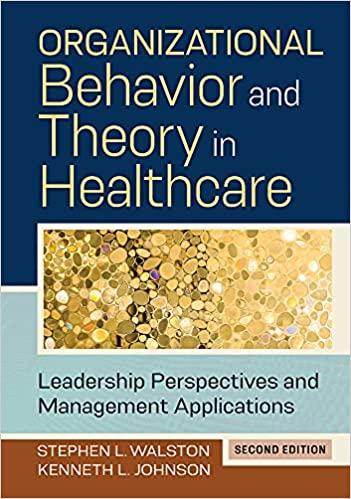How is Grahams situation a possible example of confirming-evidence bias? Graham rules with an iron will. He
Question:
How is Graham’s situation a possible example of confirming-evidence bias?
Graham rules with an iron will. He feels that the only way to motivate his employees is to give them clear direction and have them keep him informed of their progress. He has full confidence in his own abilities, and believes that his employees respect and like his management style. This belief is validated in almost every meeting: He presents his agenda and states what needs to be done, and everyone always happily agrees with him. Well, almost always.
Once, during a department head meeting, the new director of maintenance publicly disagreed with him. That discord was short lived, as Graham made it clear that his opinion on a topic would stand.
Recently, Graham and his sister were discussing a Harvard Business Review article titled “Three Tips for Overcoming Your Blind Spots” (Dame and Gedmin 2013). His sister, who is studying leadership, suggested that all leaders have blind spots which cause them to believe something other than reality. The article noted that blind spots may occur because of confirmation (or confirming-evidence) bias, selective memory, and groupthink. Graham thought the article was interesting but told his sister that his organization has no biases, that he can tell what his managers and employees feel about his suggestions, and that he can read in their faces and body language that they agree. Graham boasted that he has built a cohesive, well-oiled management team he knows like the back of his hand.
Step by Step Answer:

Organizational Behavior And Theory In Healthcare Leadership Perspectives And Management Applications
ISBN: 9781640553026
2nd Edition
Authors: Kenneth L. Johnson, Stephen L. Walston





